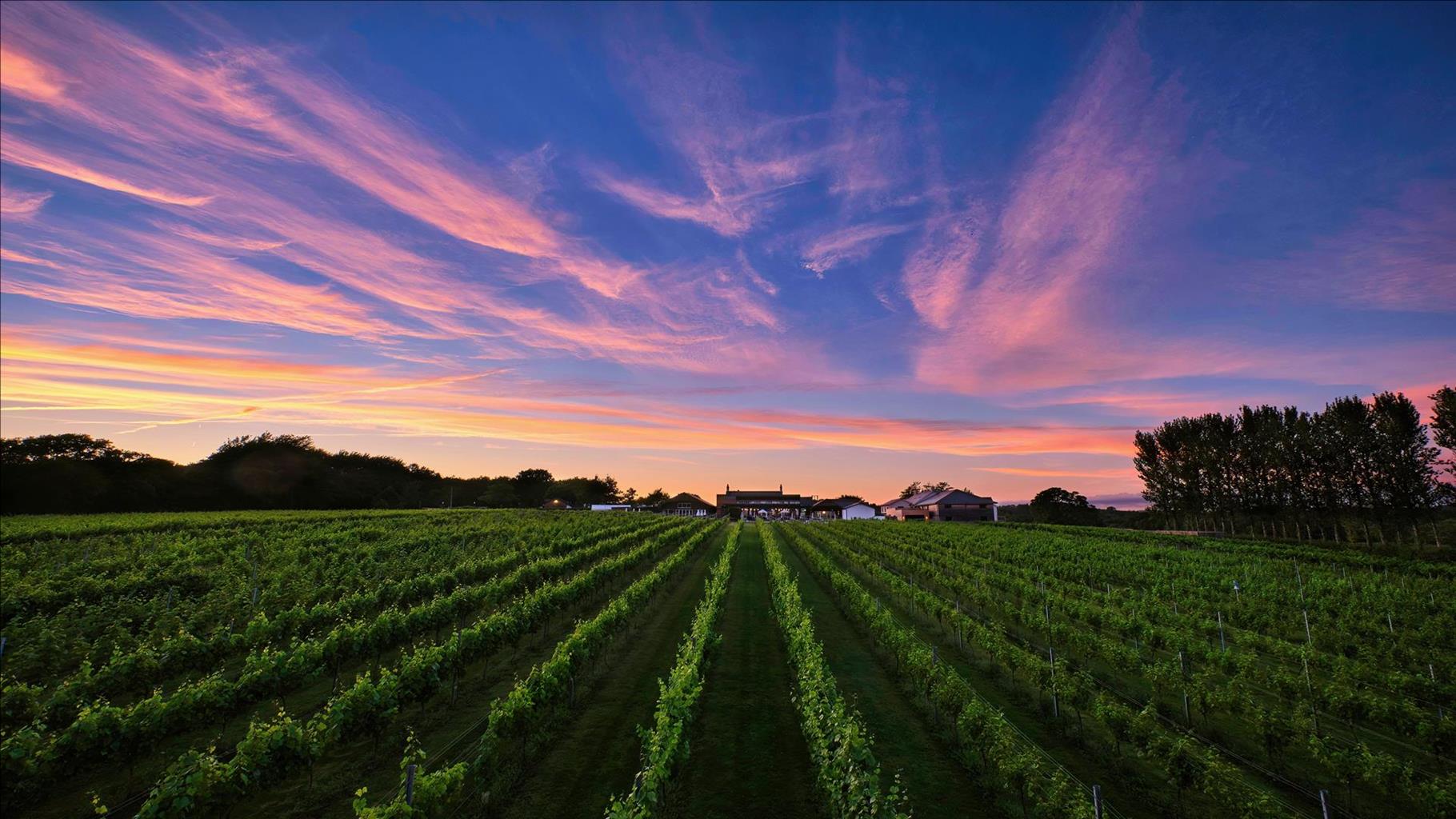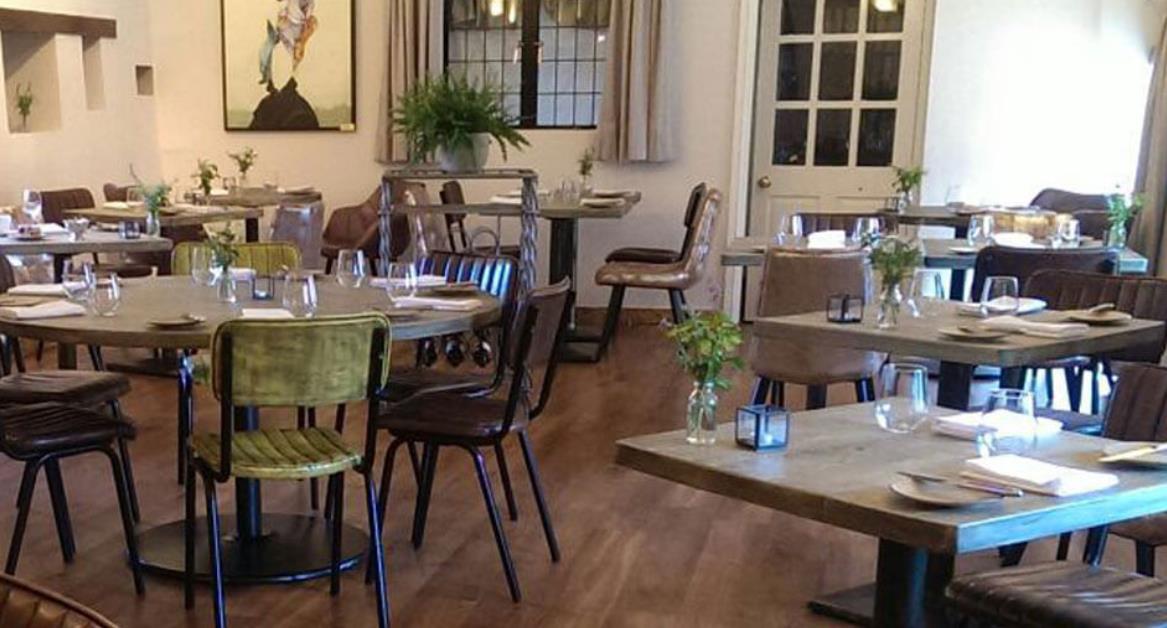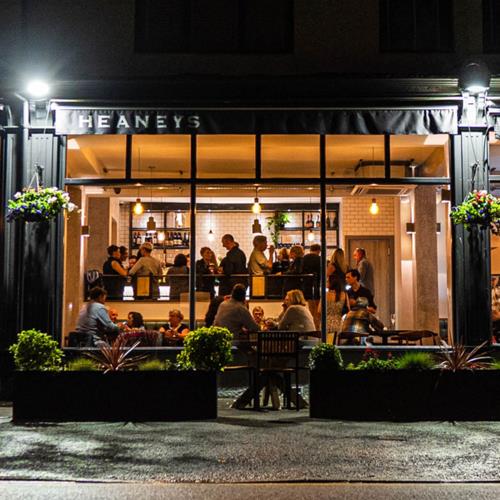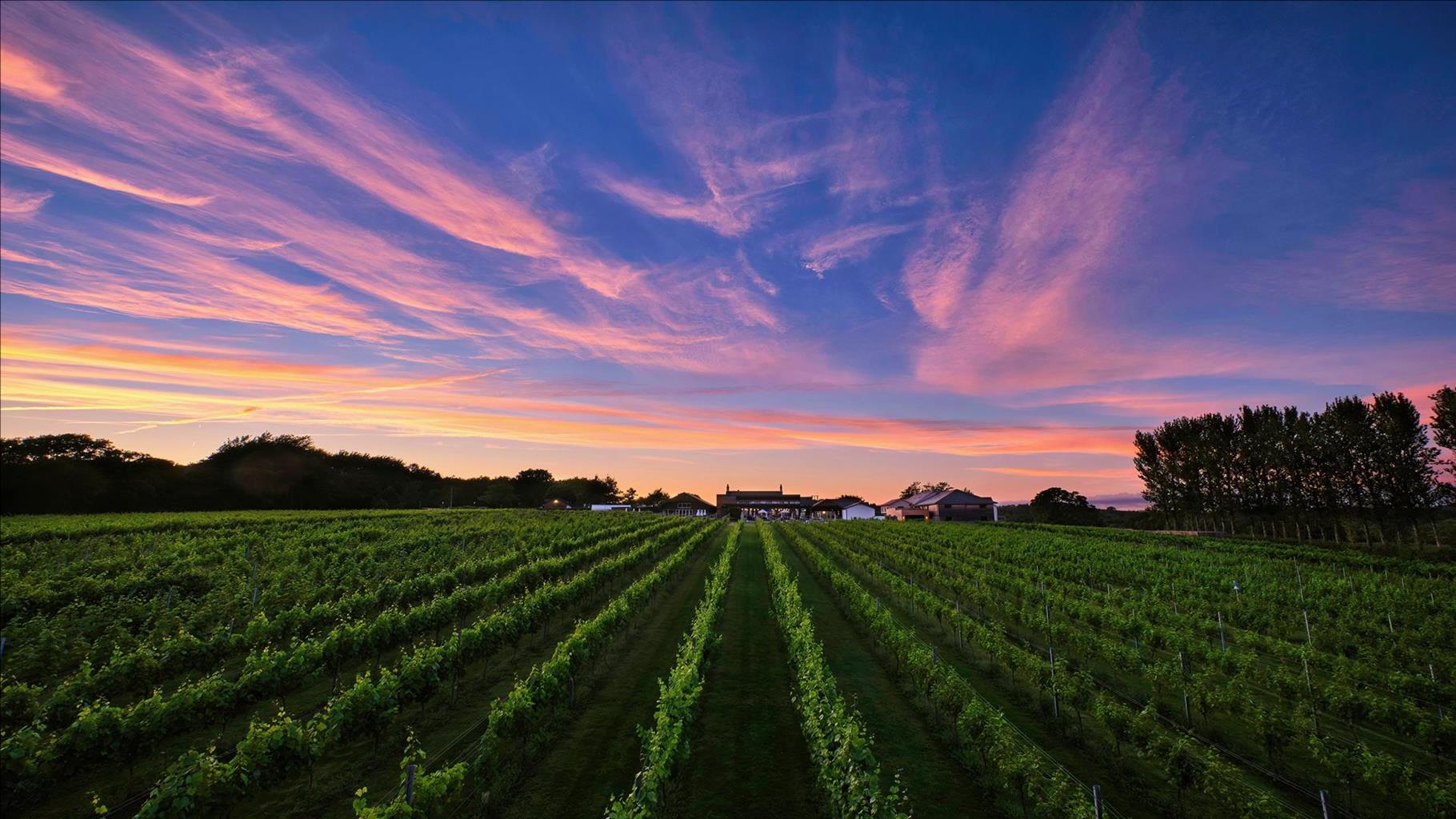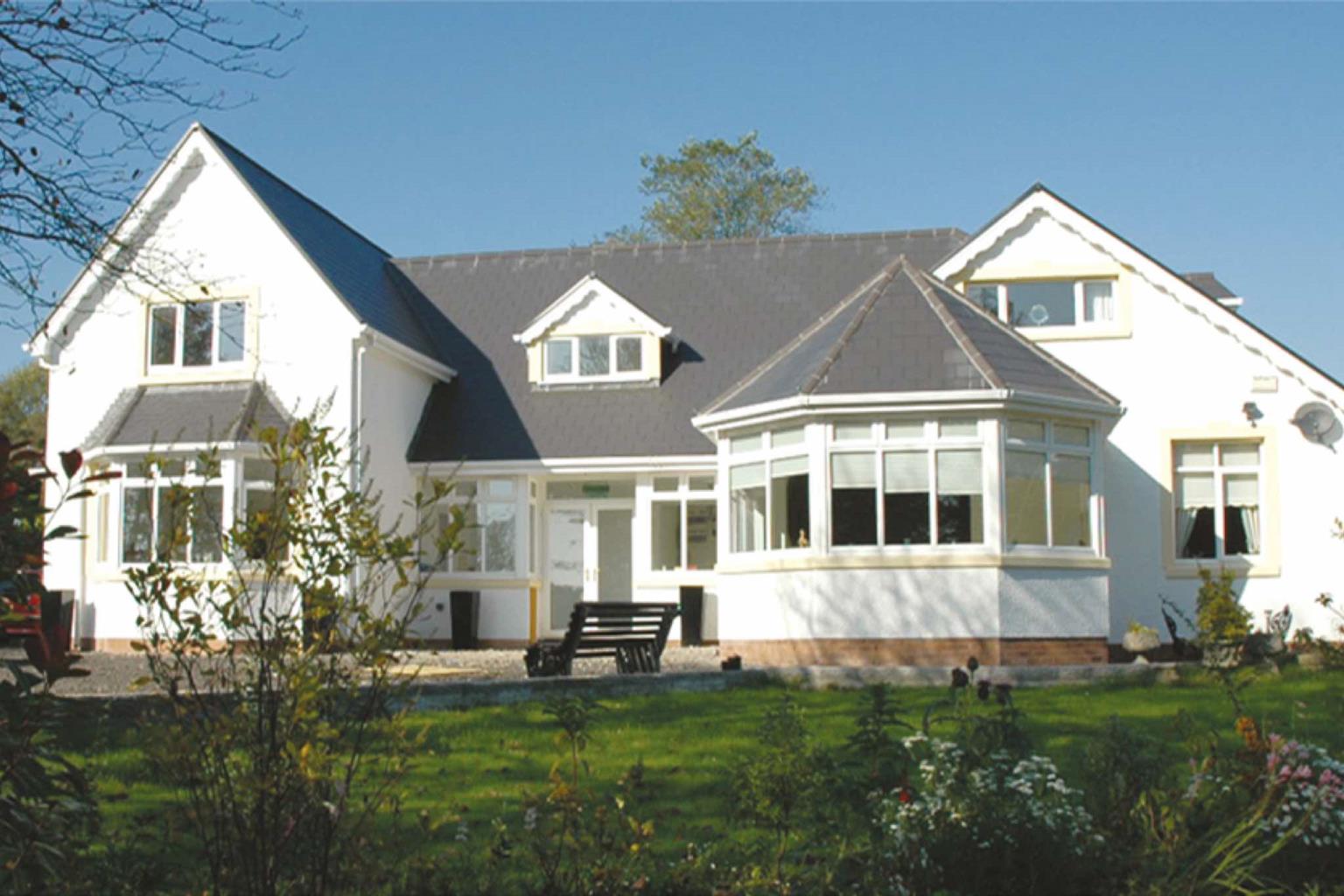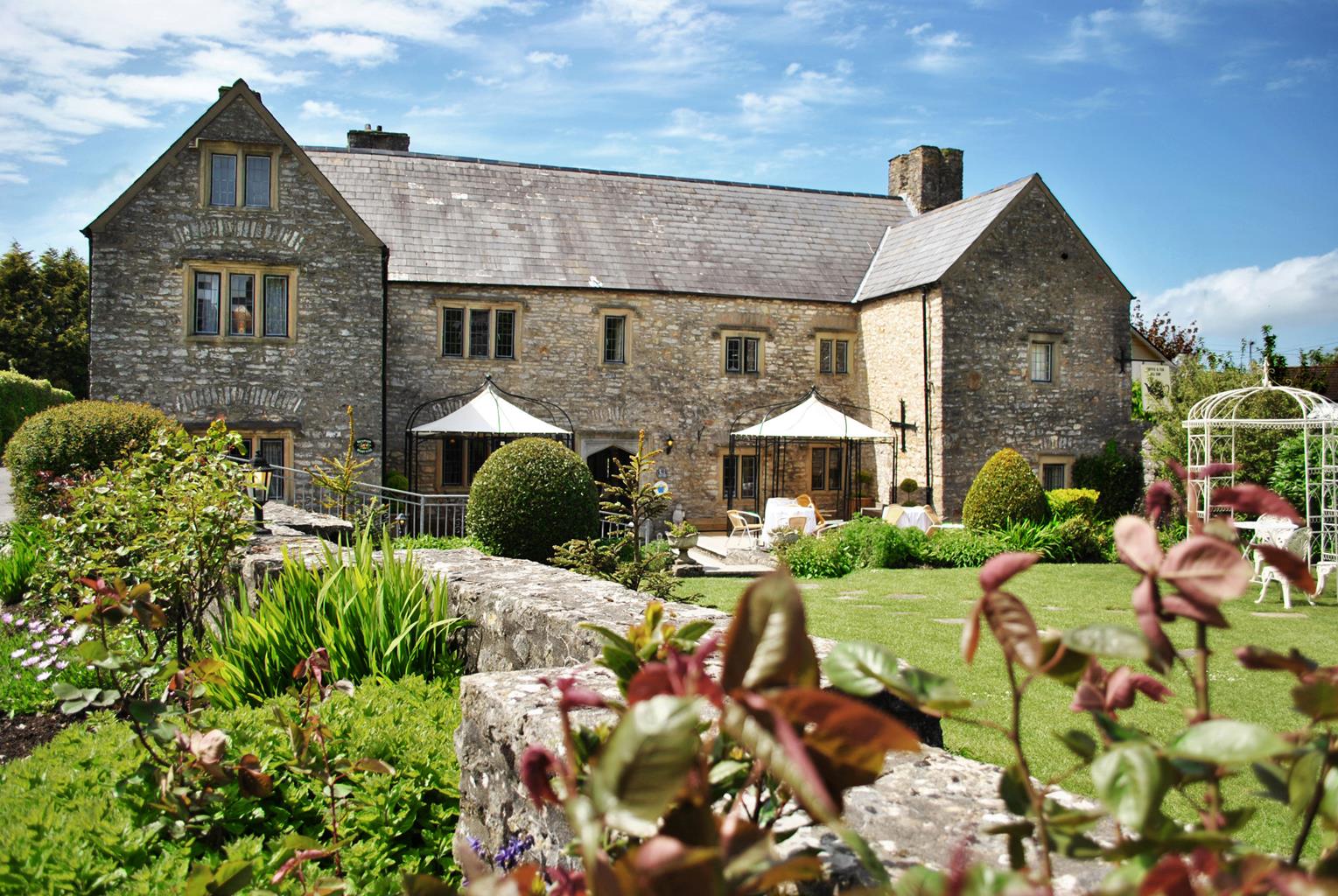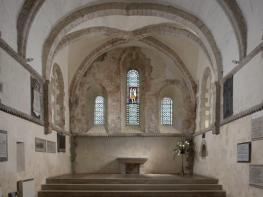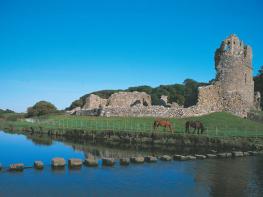Situated within easy reach of the town centre and the M4, this large modern hotel offers…
Llantwit Major and St Donat’s

Along the Glamorgan Heritage Coast to St Donat’s and Marcross from Llantwit Major
9 miles (14.5kms)
About the walk
There is no place more significant to the spread of early Christianity among the Celtic peoples than Llantwit Major. It was here, in the early 6th century, that St Illtyd re-established the famous divinity school of Cor Tewdws, which attracted pilgrims and pupils from throughout the Celtic world. More than 1,000 pupils attended the school at its height, including the future patron saints of Wales and Ireland, St David and St Patrick. The school was the axis around which the early Celtic church revolved, forging connections along the sea roads of the Atlantic with Cornwall, Brittany and Ireland.
Unfortunately, the original school and monastery were built of wood and have long since vanished. The present church is Norman in origin, but an interesting building in its own right. In 2013, a ruined chapel at the western end of the church (the Galilee) was fully restored and now houses a fabulous collection of Celtic stones and crosses formerly contained within the main church. A Latin inscription on the beautiful Houelt Cross refers to a Hywel ap Rhys, who was king of Glywysing (roughly, the old Glamorgan) in the late 9th century.
A mile or two to the west of Llantwit Major is the stunning St Donat’s Castle. The original medieval fortress was founded by the Stradling family in the early 14th century; later on, during the 16th and 17th centuries, they enlarged and converted the castle into a great house, retaining original defensive features such as the battlemented curtain wall for ornamental effect.
After an amazing 23 generations, the Stradling connection with St Donat’s came to an end. There were several changes of ownership before the site was bought in 1925 by the American newspaper magnate William Randolph Hearst. Hearst, a man of immense wealth and the inspiration behind Orson Welles’ film Citizen Kane (1941), had seen photos of St Donat’s in the magazine Country Life. Impressed, he spent a fortune renovating the castle in a style best described as Hollywood make-believe. According to George Bernard Shaw, St Donat’s was ‘what God would have built if he had had the money’. Under Hearst’s ownership, the castle was renowned for its celebrity parties, playing host to famous visitors such as Charlie Chaplin and a young John F. Kennedy. By the late 1930s, however, Hearst’s newspaper empire had fallen on hard times, forcing him to put St Donat’s on the market. Today, the building is home to a residential sixth-form college and a converted tithe barn in the grounds houses St Donat’s Arts Centre.
Walk directions
Turn right out of the car park, then left in front of the Old Swan Inn. Immediately bear left again, descending along Burial Lane to a stream crossing. Keep ahead up a flight of steps and turn left. Follow a track on to an enclosed path and continue to a stone stile on the right.
Cross into a field and follow the fence to the left. Drop through Flanders Farm to a lane and bear right. Follow a track along the top edge of Cwm Col-huw to the coast and turn right. At Tresilian Bay, cross the stony beach, climbing steps to regain the coastal path.
After 0.5 miles (800m), take a path heading inland on the right. Turn left at a minor road and continue round a right-hand bend to reach a second set of gates on the left. Walk down the drive towards the castle and arts centre, then bear right on to a narrower lane signed to St Donat’s Church.
Turn right before the church on to a woodland track and climb to a house. Keep ahead through the yard and take the lane forking left. Cross a stile on the left by a barn and follow waymarks to a field. Keep ahead, then cross a field on the right in the direction of Marcross Farm.
Meet a track in front of the farm and turn right. Keep ahead along a lane to a waymarked field gate on the left. Cross this and follow the hedge to the right. Climb a stone stile and follow the field edge ahead and then left. Continue into Marcross and turn left at a road.
Just after sewage works, pass through a gap on the right and drop to a stream. Cross over and bear left along a wooded valley. Turn left at the coast and climb to a car park. Follow the track past the lighthouses at Nash Point and join a clear coastal path to St Donat’s Bay.
Rejoin your outward route. Just beyond Tresilian Bay, take a path on the left. Climb a high stone stile into fields and keep ahead past a stone barn. Maintain direction, crossing a stile signed to Llantwit Major. Aim left of a copse and then slightly left across a large field. Several stiles later, emerge on a track (Church Lane).
Keep ahead and join a tarmac lane to the Gatehouse. Drop left towards Illtyd’s Church and follow the path through the graveyard. Climb past the town’s central square to the Old Swan Inn. Turn right to return to the car park.
Additional information
Coast path, well-marked field paths, tracks, minor roads and woodland trails (24 stiles)
Coastal cliffs, fields, woodland, historic town
Stone stiles may be difficult to negotiate
OS Explorer 151 Cardiff & Bridgend
Car park behind town hall in the centre of Llantwit Major (alternative parking available at railway station)
In town hall car park
WALKING IN SAFETY
Read our tips to look after yourself and the environment when following this walk.
Find out more
Also in the area
About the area
Discover Vale of Glamorgan
Stretching 14 miles on the coastline of south Wales, Glamorgan Heritage Coast was one of Britain’s first designated heritage coastlines. The project, launched in 1973, covers a 14-mile stretch of coastline incorporating Porthcawl (in neighbouring Bridgend), Dunraven Park, Monknash Coast, St Donats, Summerhouse Point and the cheerful beach holiday resort of Barry Island.
Featuring striking coastal countryside and lush green hills, the aim is to conserve the ‘unique character of its landscape and habitats’ for future generations.
Inland from here, tucked beneath the M4 and with Cardiff looming to the east, is the Vale of Glamorgan county borough – mostly known as The Vale. It’s a primarily rural and agricultural area and in 2003 – perhaps partly helped by its proximity to Cardiff – was determined to be the wealthiest area in Wales. Its main town is Barry, most famously the setting for the TV sitcom Gavin & Stacey. It’s still a popular seaside town, as is the Victorian resort of Penarth, further up the coast.
Nearby stays
Restaurants and Pubs
Nearby experiences
Recommended things to do
Why choose Rated Trips?
Your trusted guide to rated places across the UK
The best coverage
Discover more than 15,000 professionally rated places to stay, eat and visit from across the UK and Ireland.
Quality assured
Choose a place to stay safe in the knowledge that it has been expertly assessed by trained assessors.
Plan your next trip
Search by location or the type of place you're visiting to find your next ideal holiday experience.
Travel inspiration
Read our articles, city guides and recommended things to do for inspiration. We're here to help you explore the UK.


